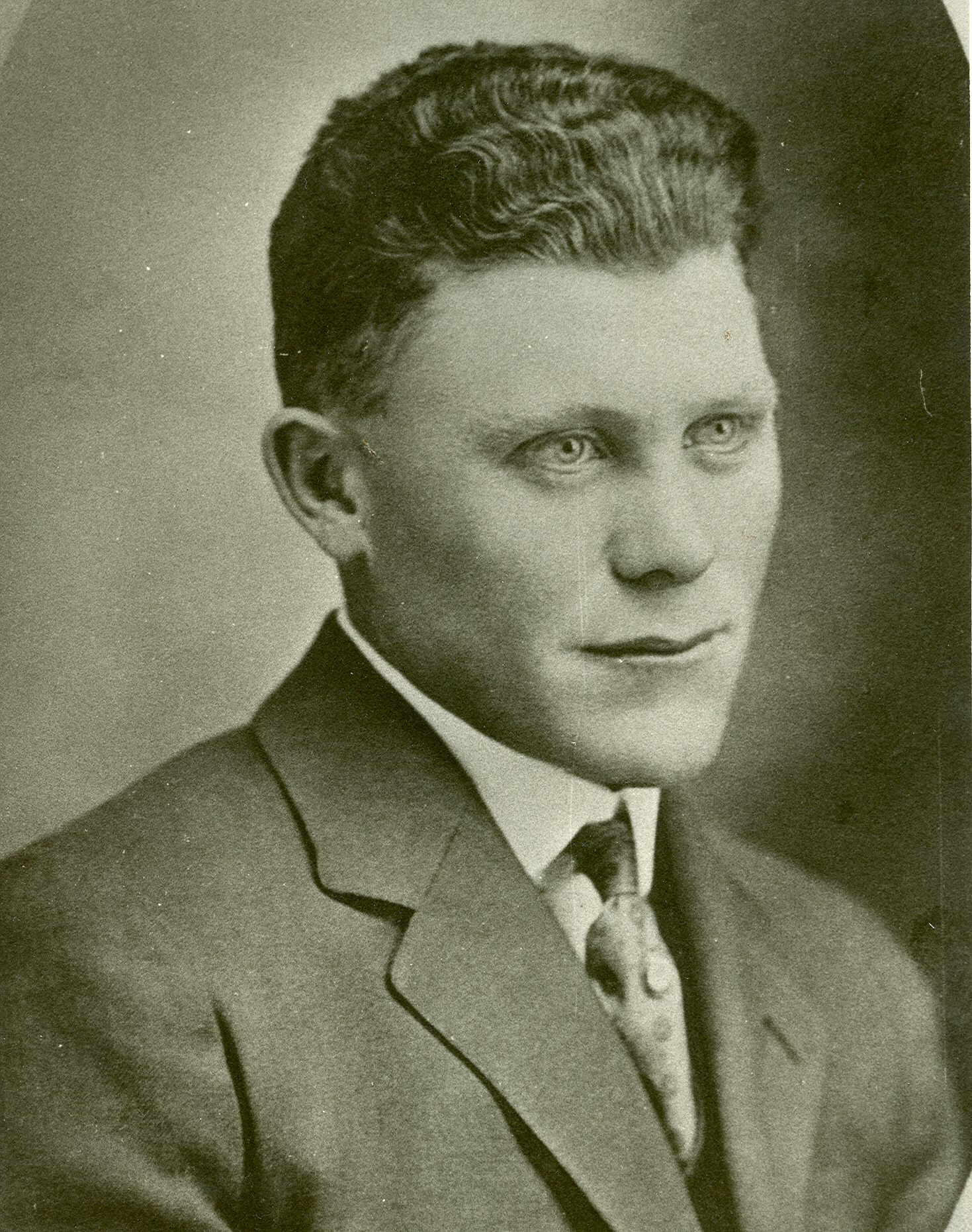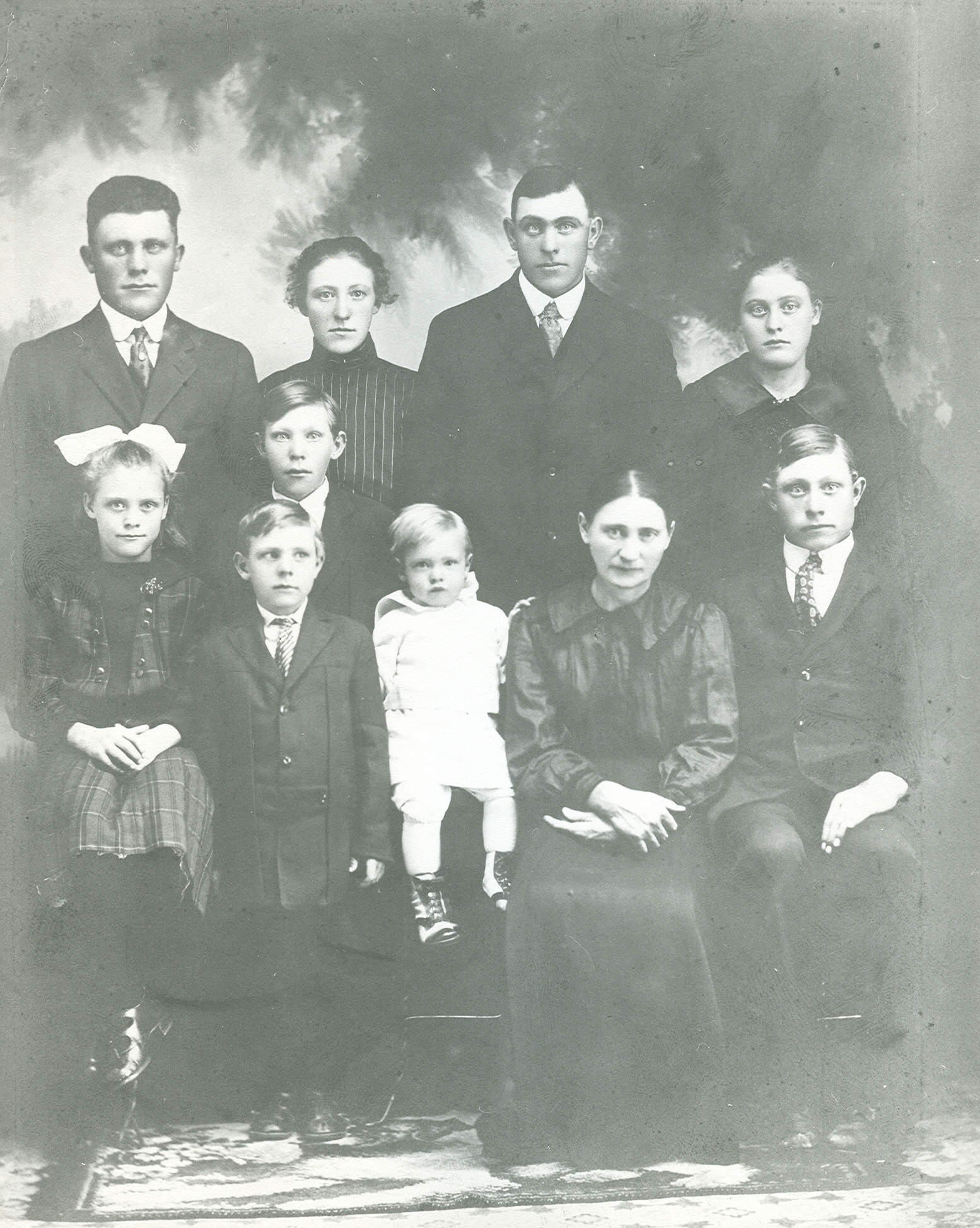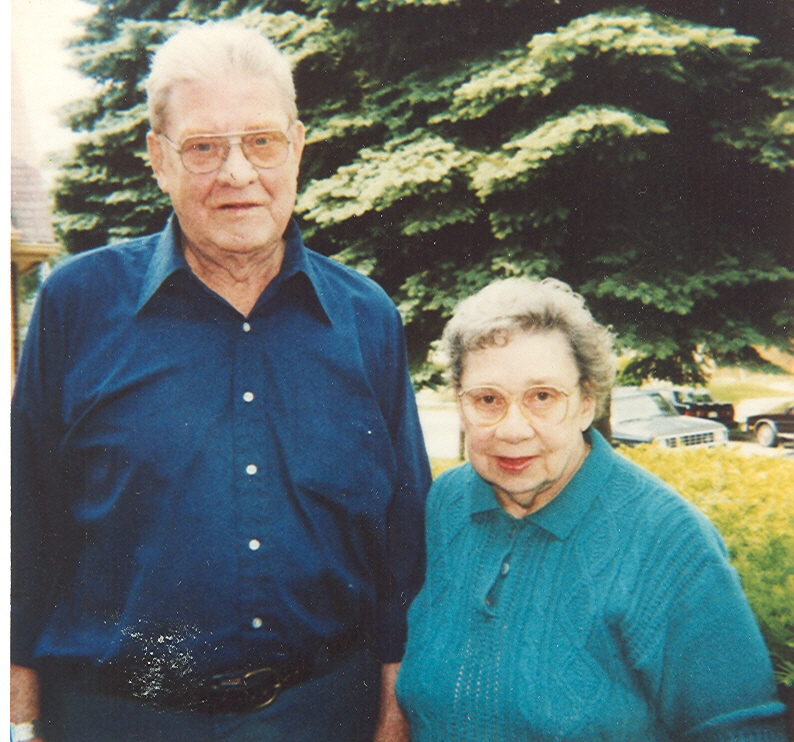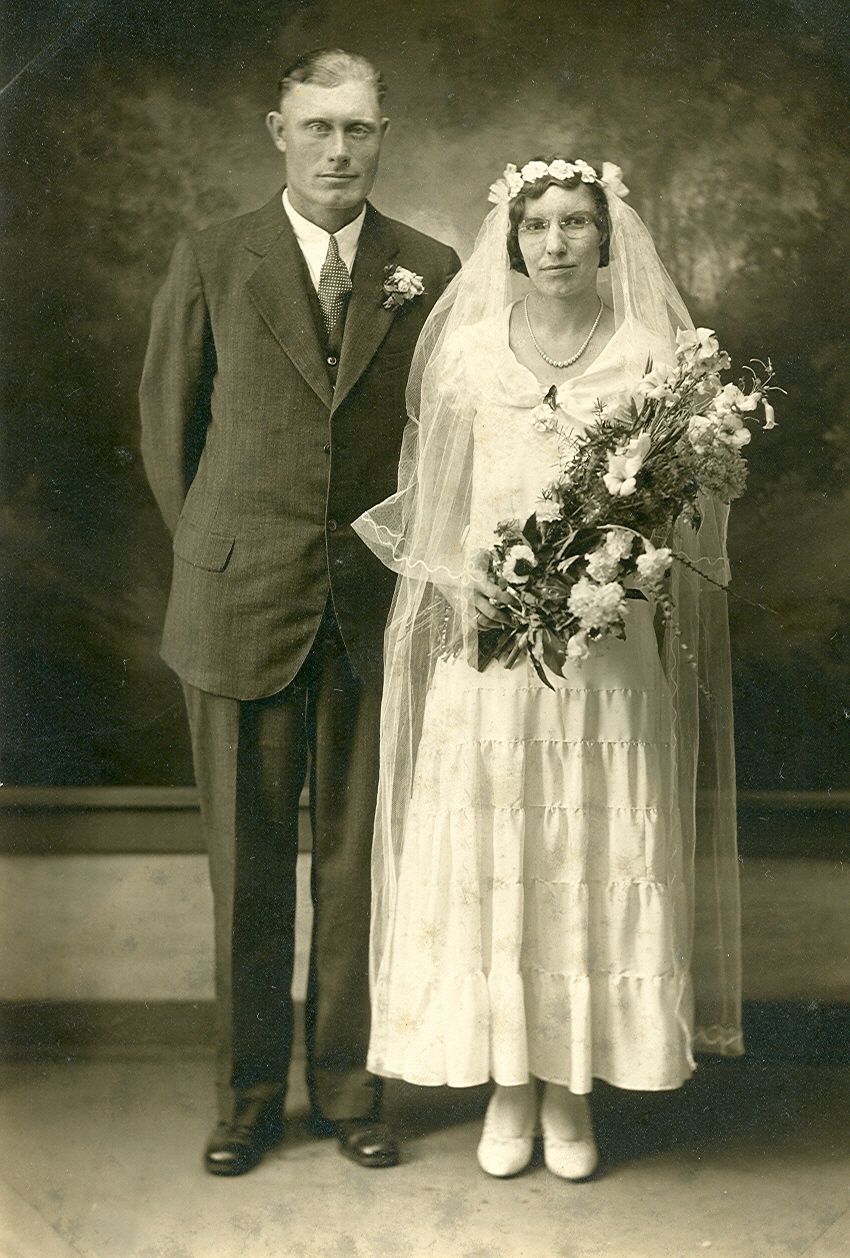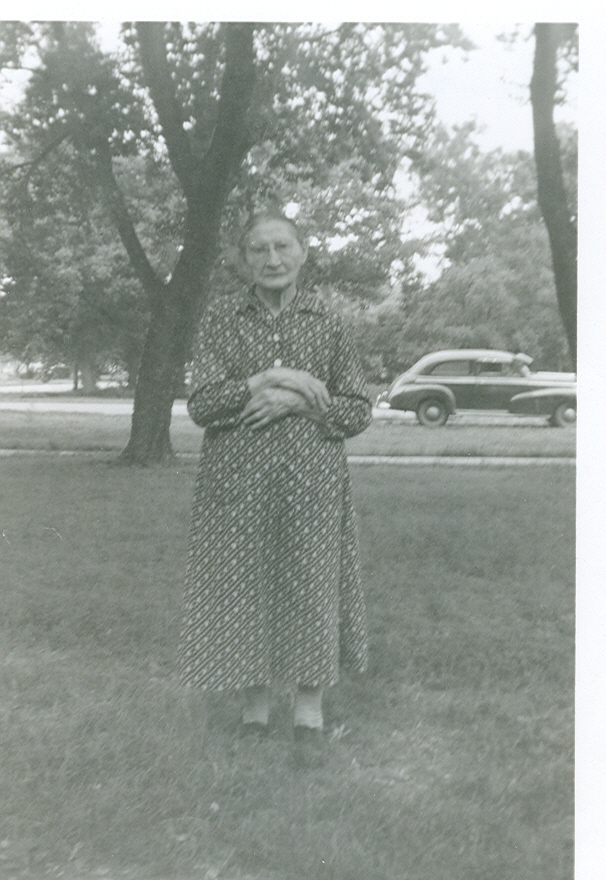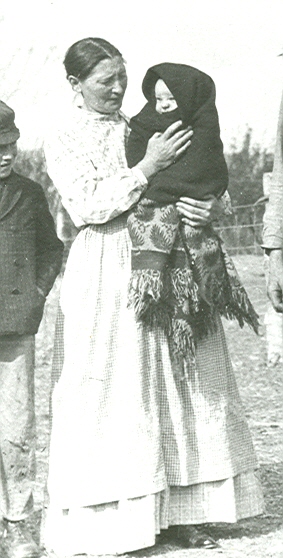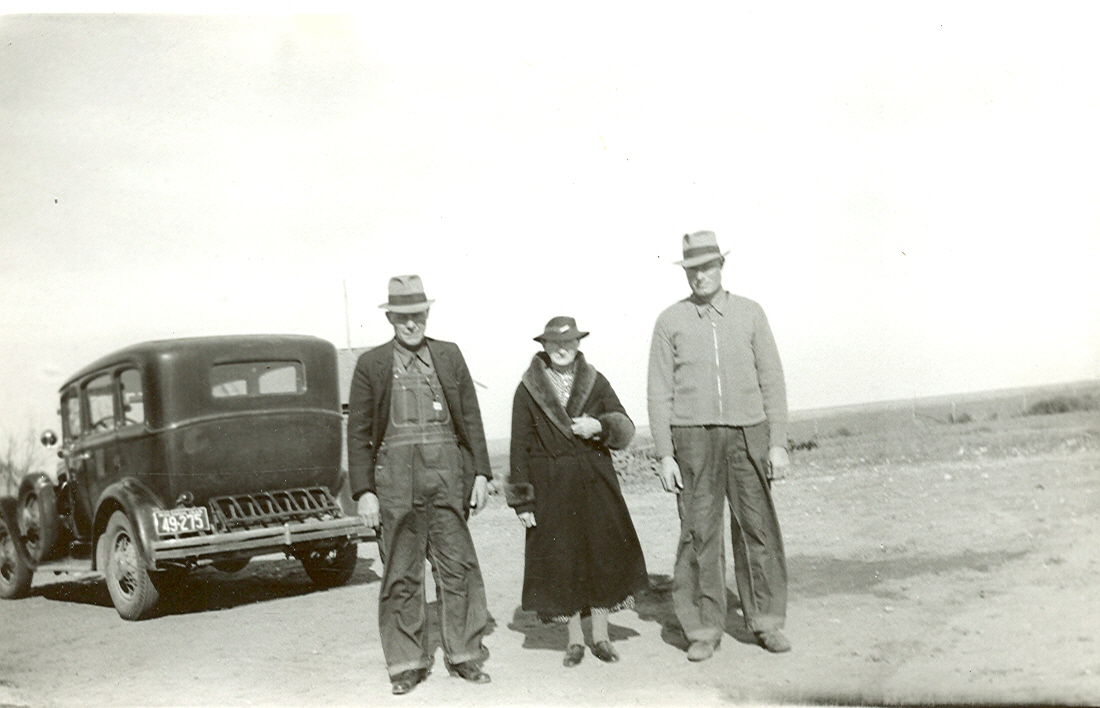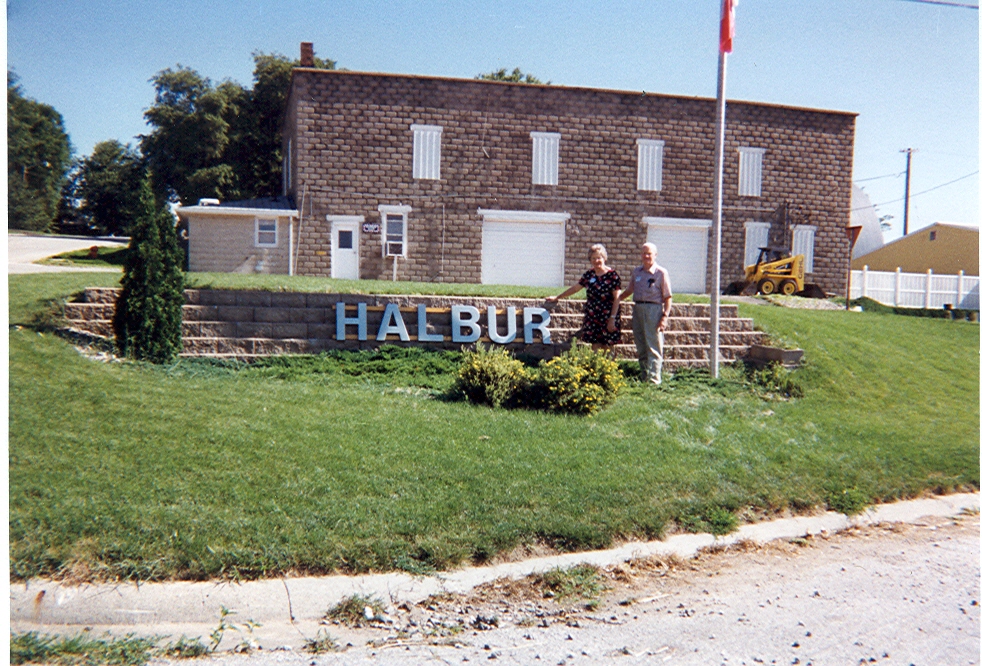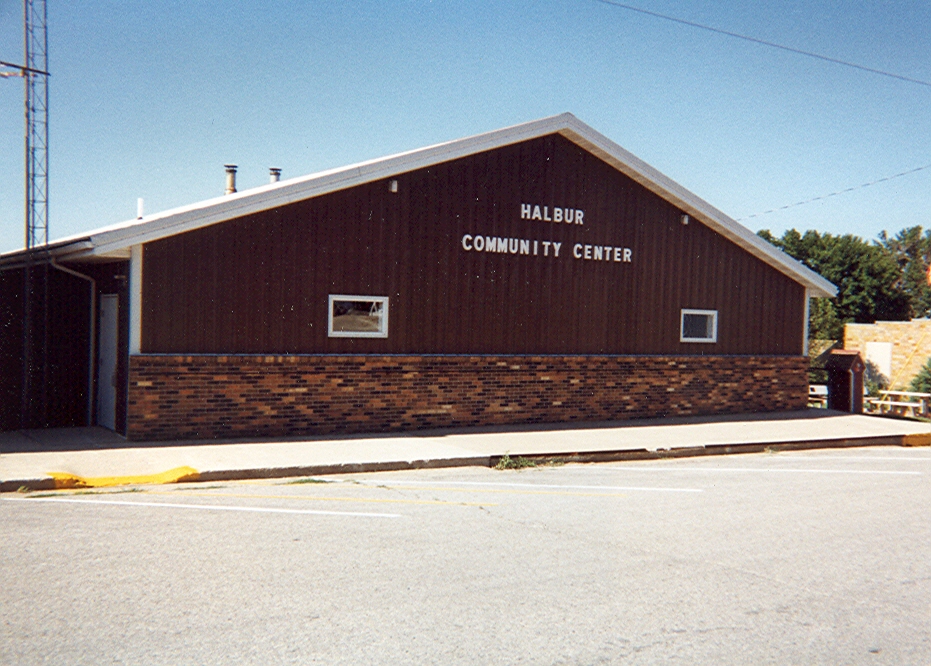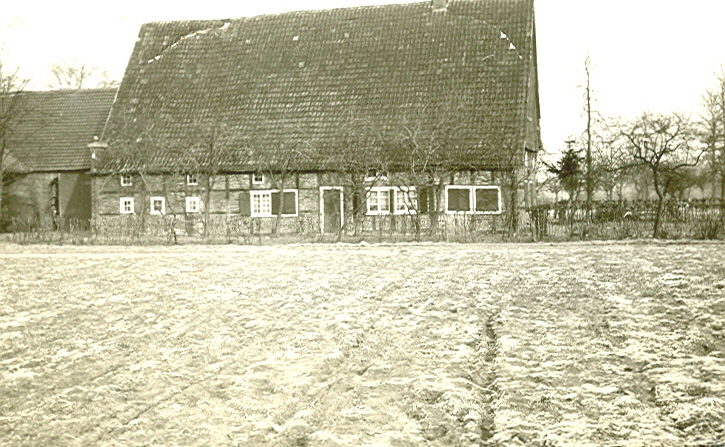Pictures of the History of Henry Halbur
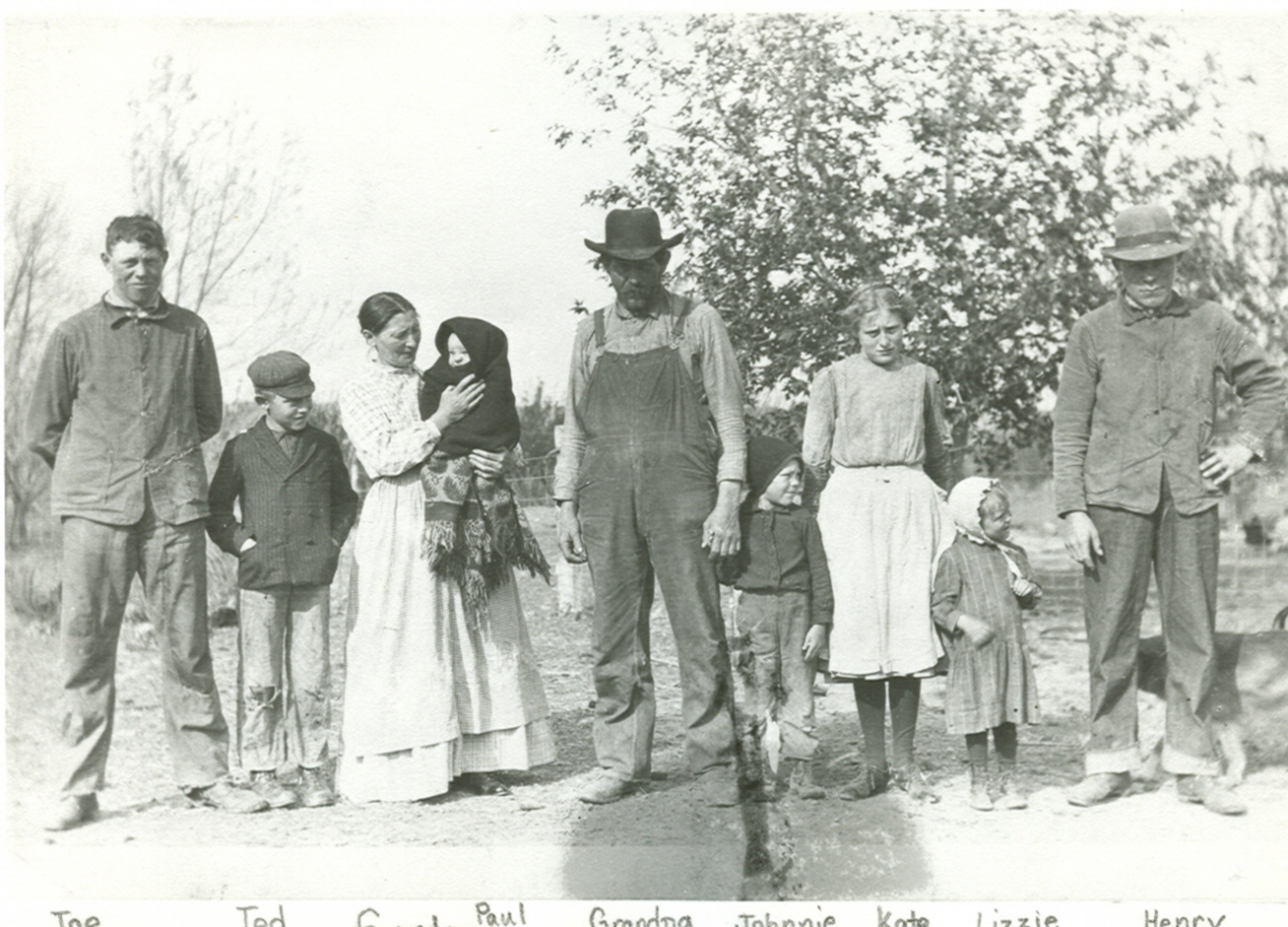
From a post card, 1913 (a common practice at that time – to have a family picture on a postcard which would be mailed to friends or relatives) Left to right: Joe, Ted, Minnie holding Paul, Anton (known as Tony), Johnnie, Kate, Lizzie, Henry. The family lived near Halbur, a town which took the name of an uncle of the Anton in this picture, whose name was also Anton. That Anton had donated the land for the railroad station. Therefore the town was named after him. He was a brother of Heinrich. The two brothers had emigrated to the US together, in 1854.
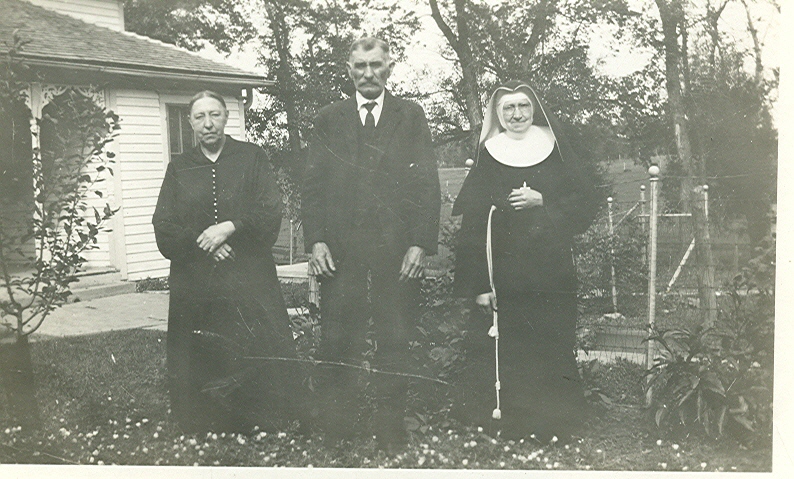
The three siblings of Wilhemina (Minnie) Overmohle Halbur, L to R: Elizabeth (married Henry Buelt), Gerhard, and Sister Nothburga (Maria Anna). She was a Dubuque Franciscan. Elizabeth and family moved to near Raeville, Nebraska. Gerhard stayed on the edge of Roselle, Iowa, where he farmed. Maria Anna entered the convent.

Pencil color drawings of what had been the Lütke Halbur buildings. The drawing was done long after the Halburs had emigrated to the US. The drawings and the photo were given to me (Connie) by an elderly lady who had grown up there. It was her grandfather who purchased the land after the Halburs had already gone. The buildings burned to the ground about 1970, as a result of arson.
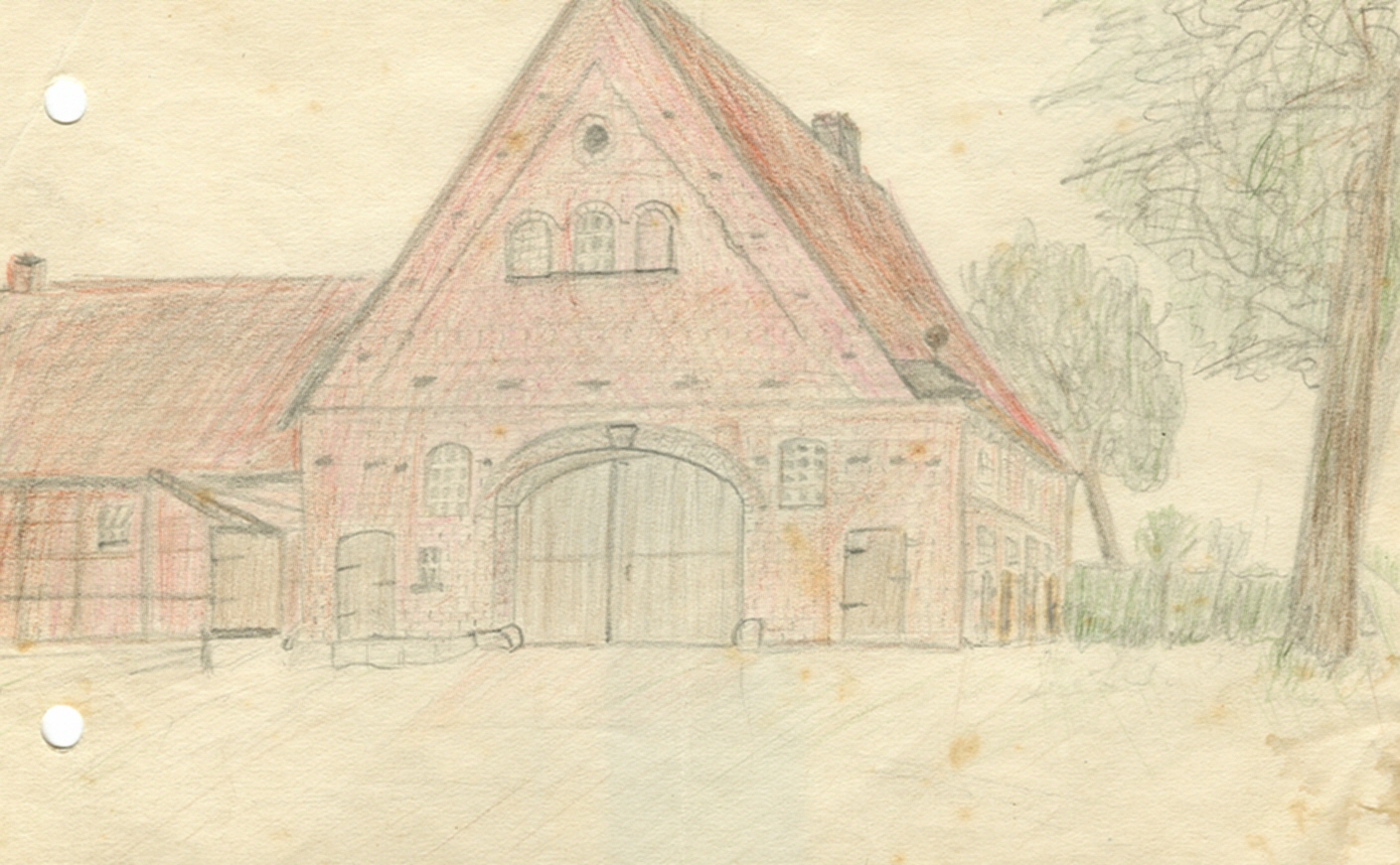
Pencil color drawings of what had been the Lütke Halbur buildings. The drawing was done long after the Halburs had emigrated to the US. The drawings and the photo were given to me (Connie) by an elderly lady who had grown up there. It was her grandfather who purchased the land after the Halburs had already gone. The buildings burned to the ground about 1970, as a result of arson.
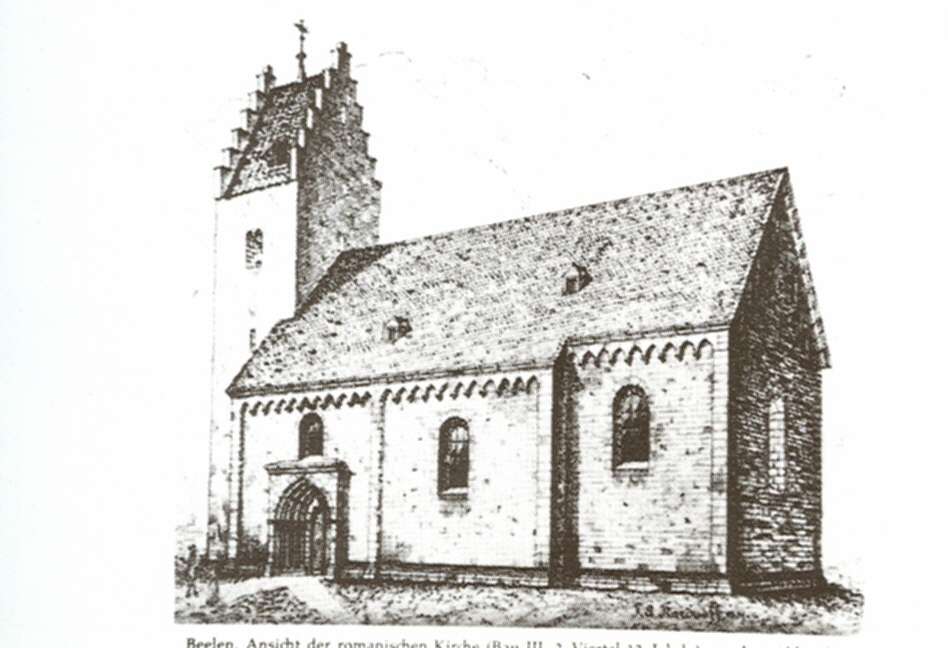
The Catholic church in Beelen, as it looked when our ancestors worshipped there. It was built in the 11th century, but there were 2 additions, the latest being in the 13th century. This was the building where all of our Halbur ancestors worshipped. However, Theresia and the two nieces, Margareth & Catherine. worshipped in both the old and the “new church”, which was built in 1854. But the 1854 church too was torn down, and a new, modern church was built in 1968. Some of the most significant items from the old churches were incorporated in this newest church.
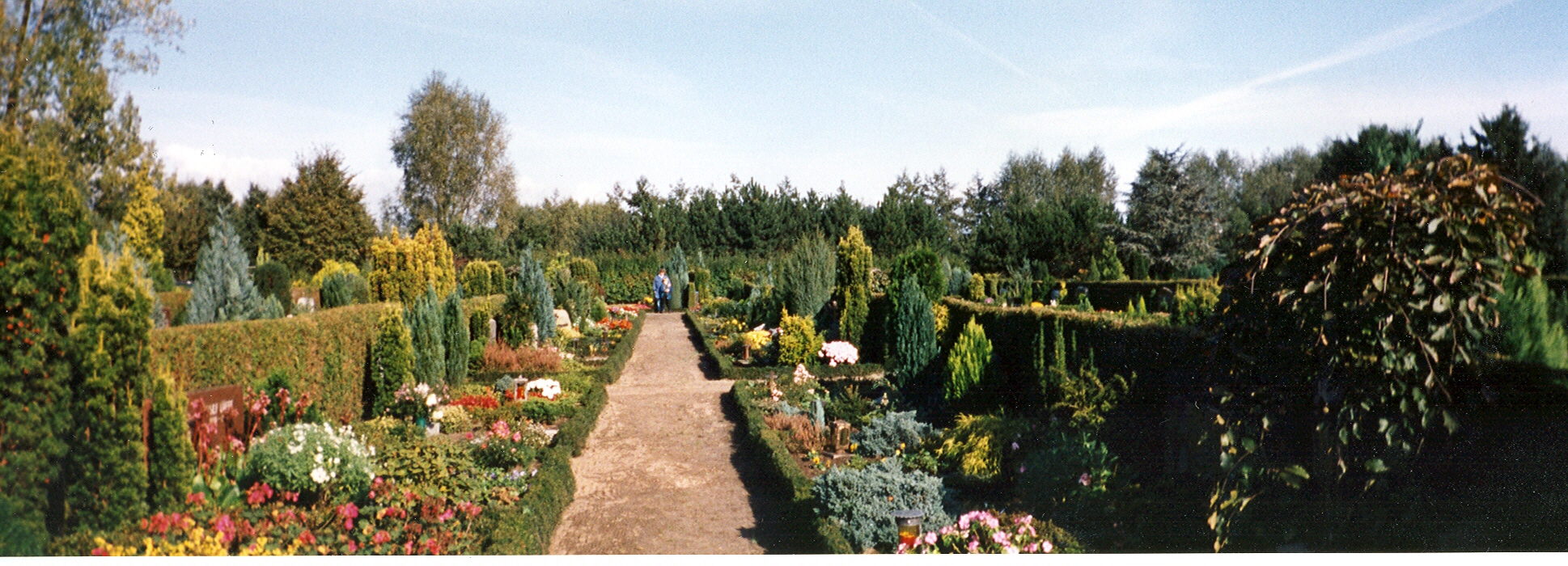
The cemetery at Beelen. In Germany, cemeteries are kept up much better than in the US. Our Grosse Halbur “relatives” in Beelen told me that this is actually carried to extreme there and in some other areas, to the point where decorating the graves becomes competitive. Because there is so little available land in Germany, graves are re-used after about 30 years. One seldom sees very old headstones in Germany.
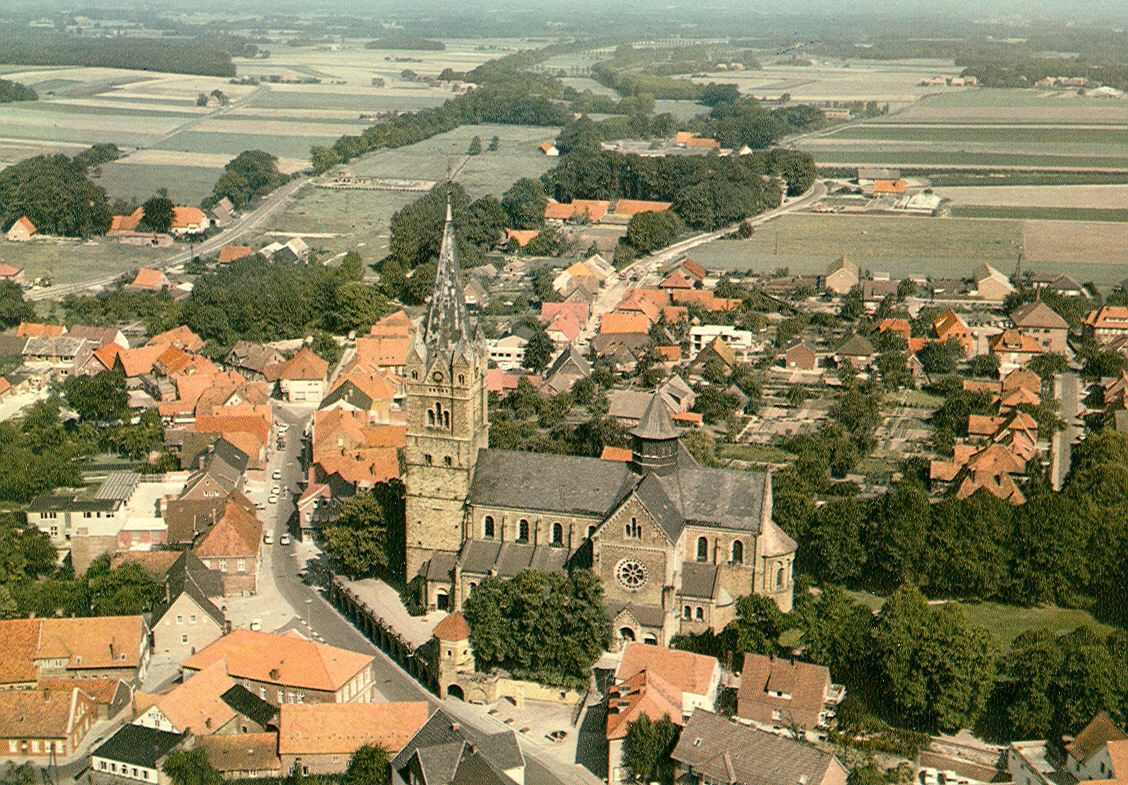
Aerial view of the center of Ankum, the German “hometown” of the Overmohle’s. The church is not the one where our Overmohle ancestors worshipped. Actually, the base of the steeple is from the old church where they worshipped, but that church was the victim of arson, in the 1890s. Only the bottom half of the steeple survived the fire. Our Overmohle ancestors did not live in the town itself. They lived about 1 ½ miles NW of the town.
